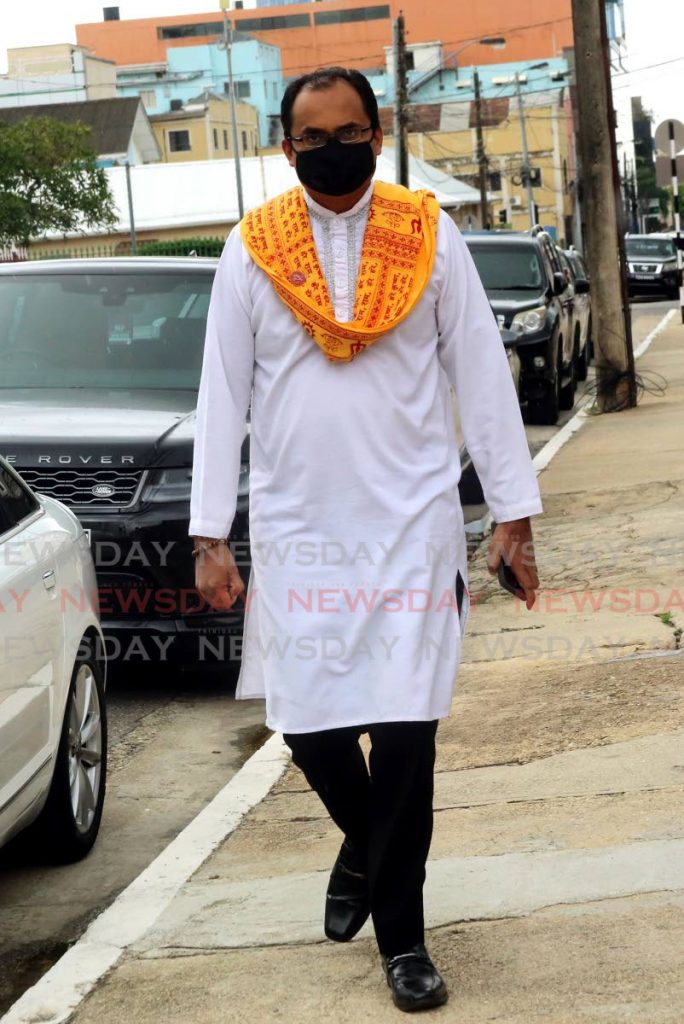Lighting the fire of oneness

DINESH RAMBALLY
SITA RAM and Namaskaram to all of you, my brothers and sisters, on this very auspicious occasion of Divali 2021.
As we celebrate Divali during another pandemic year, we must once again deviate from our traditional practices of gathering together to light hundreds and thousands of deyas with our friends and family across TT.
Among all the Divali traditions, perhaps the most iconic is the lighting of deyas.
How did such a little, modest clay lamp, with coconut oil and a cotton wick, come to be the unmistakable signature of a festival celebrated worldwide, including in one of the highest seats of world power, the White House in America?
Well, perhaps it is because there is nothing so modest about fire.
Humans have always regarded fire as a significant feature of any important experience. From fire we get our food. We have fire on our birthday cakes, fire in the Olympic torch which ushers in the games, bonfires for celebrations, fireplaces around which people sit and chat. Even symbolically, the Statue of Liberty depicts a torch in her upraised right hand. In Trinidad, rightly or wrongly, some people use the fire of burning tyres to convey their desperation for help.
In the Hindu tradition, fire is one of the five elements, or panch mahabhutas, which make up our bodies, and in fact the entire Creation.
The others are earth, water, air and ether.
It is only when we die that the fire element in our bodies dissipates completely. So fire, along with the other elements, keeps us alive.
Hindus have integrated fire into all significant rituals. No pooja or yagna is complete without a fire.
In a wedding, the bride and groom walk around the fire seven times. It is the ultimate witness in our sanskaars or religious sacraments.
In the Hindu tradition, at least one deya must be lit every day at the sandhya hour.
The fire of a havan enjoys pride of place in many rituals, as it is considered a direct doorway to access the world of the gods and all the blessings that spring from there.
Fire also grants us access to the most subtle of all the elements, called ether, which is the substratum on which the intelligence of the Creation flows.
So whether we are drawn to fire by primal human instinct, or whether we recognise the spiritual potency of it, fire is an expression of our need to touch the extraordinary. It is a doorway to accessing something bigger than ourselves.
On Divali night, we consciously light as many deyas as we can, not just to dispel the physical darkness, but to dispel our very commonplace and humdrum aspirations in exchange for something that is more essential and worthwhile to our very existence.
This concept is nicely summed up in the following mantra from the Brhad-aaranyaka Upanishad in which we ask for us to transcend darkness, ignorance and immortality:
Asato ma sad gamaya
Tamaso ma jyotir gamayah
Mrityor ma amritam gamaya
When we see the light of the thousands of deyas, we cannot help but stand in awe of that goddess who presides over light: Lakshmi Mata. Last year, I touched on the eight different aspects of Sri Lakshmi, and the boons that she so freely gives to us all, such as wealth, victory, knowledge and offspring, just to name some.
In the presence of the rows and rows of deyas, we cannot help but notice that there is an inexorable oneness of fire even in the apparent multitude of flames. And this is perhaps the quintessential lesson for us all – that despite our apparent separateness, we are all still one. One people, one humanity. But even more than that we are one with the Creator, a concept so fundamental to Hinduism, and commonly known as the great truth: Aham Brahmaasmi.
Let me invite you to think about this: No flame gets dimmer when it gives of itself to create a new flame. No flame gets smaller when it yields to other flames. The idea of this oneness that underlies the apparent diversity of Creation is powerfully packed in the following mantra from the Isha Upanishad:
Purnam adah purnam idam
Purnaat purnam adakshate
Purnasya purnamaadaya
Purnameva vashisyate
In essence, it means: From that complete Creator comes this complete Creation, yet only completeness remains. Very much like the flames of the deyas.
To this end, let us all remember that, like the many, many flames that shine brighter on the darkest night, we too can shine brighter when we recognise our oneness and our togetherness as we aspire to reach extraordinary heights.
May the fire of Divali burn brightly in your hearts on this occasion and throughout your lives. This is my Divali wish for you.
Shubh Divali.
Sita Ram aur Namaskaram.
Dinesh Rambally is the Member of Parliament for Chaguanas West


Comments
"Lighting the fire of oneness"